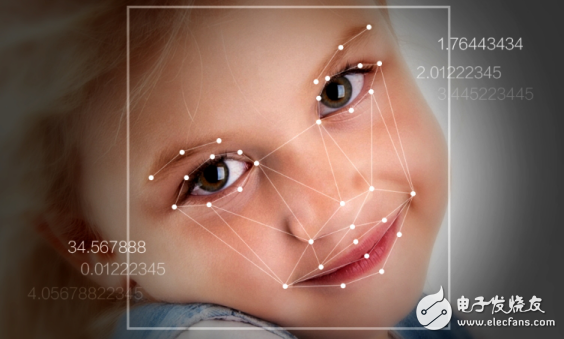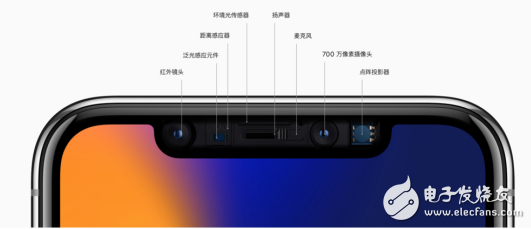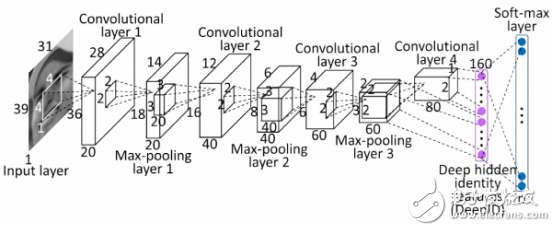Face ID can come later, 3 advantages can answer
The development of science and technology is rapid, and identification technology has always been the subject of research by technology giants. Face recognition and biometrics such as fingerprints, palm prints, and iris recognition are constantly appearing. However, who are the most insured? What is the most effective product? At present, the face recognition technology has been questioned from the authoritative media to the application, and the speed of AI technology development is dizzying. Whether it really can adapt to the market, it is still unknown. The time from the pre-sale of iphone X is getting closer and closer. Despite the constant accident of iphone 8, people's desire for iphone X is increasing. One of the reasons is that iPhone X abandoned the widely used Touch ID fingerprint recognition technology. Mobile phone unlocking and payment authentication are implemented using Face ID based on AI neural engine. However, regarding Touch ID, this year's CCTV "315" party broke the loophole of the face recognition technology. The host demonstrated using one of his ID cards to deceive face recognition and successfully log in to another person's account. For a time, people are panicking about the application of face recognition technology. Face recognition technology that comes into reality from science fiction movies does not seem to have a stronger security advantage than traditional passwords. After half a year has passed, the face recognition technology has been questioned by the authoritative media and the application has blossomed everywhere. The speed of AI technology development is dazzling. Why can face recognition replace fingerprint recognition? What are the unique advantages of Face ID based on neural network technology, attracting technology giants to spare no effort to use it to bet on the future, will it be targeted by CCTV “315� Smart Relativity briefly describes and contrasts face recognition and Face ID technology, giving you a clear picture of modern face recognition technology. Why is face recognition behind the safely certified track? In essence, face recognition, like biometrics such as fingerprints, palm prints, and iris recognition, has universal, unique, and persistent attributes. Fingerprint recognition can be widely used, thanks to the direct contact between fingerprint and acquisition equipment and the improvement of photoelectric conversion precision. At the same time, the fingerprint area is small and the texture is clear, which makes the data acquisition and recognition process relatively easy to implement. Compared with other types of biometrics, face recognition “space separation†collects data with more interference and is difficult to process. However, due to the following three outstanding advantages, the application has become more and more extensive, and it has become the main force of safety certification. 1. The identification process is friendly. The use of fingerprints, palm prints and iris recognition requires direct contact with the detection instrument. Face recognition is non-contact recognition, and images are automatically collected in the space to facilitate implementation. 2, convenient and fast. Data acquisition can be achieved using a normal camera or a 3D scanner, usually within milliseconds. According to statistics, mobile phone users need to unlock the phone 80 times a day. With the face recognition unlock function, the unlocking process will be greatly simplified. 3, in line with common sense, good interactivity. By detecting the face and recognizing the identity, and keeping in line with people's living habits and cognition, it is easier and more intuitive to see the recognition result, which is more universal. Behind all kinds of fancy recognition technology, no more than two-dimensional or three-dimensional recognition Most of the current face recognition technologies are two-dimensional recognition, which collects a planar image of a human face, and relies on feature points on the image to generate a set of feature values, and then each time it is recognized, it will be entered with the first time. The eigenvalues ​​are compared, and even a certain accuracy is achieved. When the two-dimensional recognition changes in illumination, posture, age, etc., the recognition effect is not satisfactory. At the same time, the lack of security is its congenital deficiency. There is not a small number of things that deceive the past. Even the multi-angle recognition and expression recognition introduced in the later stage only slightly improve the security, but it is not essential. change. 3D face data can better highlight the characteristics of face in space than 2D face data. It has explicit spatial shape representation, and the information volume is much richer than 2D data. These characteristics can be simple and effective to some extent. Different people's faces are distinguished, and the recognition is more stereoscopic and more accurate. Intelligent relativistic statistics, the existing three-dimensional face recognition methods are mainly the following four. 1. Based on airspace matching. This type of method can directly complete the matching operation by inputting point cloud data without performing feature extraction. For example, first extract the part whose face is affected by the expression (such as the nose), and then use the algorithm to perform 3D face matching on the surface. 2. Based on local feature matching. The effective local geometric features are extracted from the 3D face surface, the face depth data is aligned by the feature points, and the three curves of the nose tip region, the eye region and the symmetry plane region are extracted, and a new feature vector is synthesized for matching and recognition. 3. Based on overall feature matching. Think of the 3D face as a whole and extract features based on the whole. The use of depth images is one of the methods, which can be performed by orthogonally projecting three-dimensional face data, and then using various methods in two-dimensional face recognition. 4. Based on bimodal feature matching. It combines two features of two-dimensional texture and three-dimensional geometry to identify. Because the information after integration is more abundant, it is more research value, but the implementation is more complicated. Powerful 3D recognition also has a lot of short boards 3D face recognition provides a new perspective for the machine to automatically recognize faces. It has obvious advantages over 2D face recognition, but the intelligent theory of relativity believes that it also faces many difficulties. 1, lighting changes. When the camera sensor device collects a face image, the difference in the acquired image may be caused by the illumination change of the external environment, the problem of the shooting angle, and the like. 2, expression factors. People's different expressions can cause changes in the position and texture of some organs and muscles on the face, making it difficult to identify. 3. Change in posture. Face images of various poses, such as side face, head up, hoe, bow, etc., are also difficult to detect and identify. 4, blocking factors. Masks, sunglasses, hats, scarves and other clothing to cover the face, or other factors such as beards, make-up, etc., will also bring difficulties to the detection and identification process. 5. Age factor. As the age increases, the skin texture of the face, fat and thin, facial features, etc. will change, causing the data in the sample library to be invalid, causing time-sensitive problems for the identification system. 6. High computing power requirements. A large number of data acquisition, modeling and analysis comparisons on the face require higher parallel computing power of the device, and higher computational power requirements for the three-dimensional recognition module integrated in the handheld device. Face ID three magic weapons: infrared, three-dimensional, AI core In order to solve the above six technical problems of face 3D recognition, Apple has given a unique solution: improve data acquisition modeling capabilities, increase AI neural network unit, and enhance intelligent recognition and parallel computing capabilities. 1. Infrared sensing system. There is almost no feeling of change in visible light, no matter the day and night, it can intelligently recognize the face, and it is sensitive to temperature. It is difficult to fool Face ID with photos or masks without body temperature. The dot matrix projector in the iPhone Qi's "Qi Liuhai" projects 30,000 infrared invisible infrared point light sources, and an infrared photo is taken by the infrared lens to analyze the face according to the displacement deformation of the photo. Depth of field information. At the same time, the distance sensor will detect whether there is a detected object within a certain range to determine whether to open the dot matrix projector and the infrared lens. In dimly lit, matte environments, the floodlight sensing element projects an invisible infrared source outward to help the Face ID work better. 2. 3D modeling technology. At present, Samsung, Alipay, vivo X20, and Xiaomi Note 3 generally use the "2D recognition scheme", which is easier to crack with ordinary photos. The iPhone X projects 30,000 infrared point sources as feature points, and combines the depth information of the face to construct a 3D stereo face model for recognition, which greatly improves the accuracy and security of the recognition. With 2D photos alone, it is no longer possible to verify with Face ID. Even if you make a realistic 3D face model, you can't pass the precision data comparison and the test of additional detection on the eyes. 3. A bionic chip equipped with an AI unit. Artificial intelligence is the cusp of cutting-edge technology, and Apple is leading this time. The A11 biochip not only improves image processing power by 30% compared to the previous generation chip (A10), but also integrates the neural network engine to become Apple's first mobile chip equipped with an AI neural network unit. The AI ​​neural network unit calculates 600 million operations per second. It is mainly used for competent machine learning tasks, identifying people, places and objects, calculating the position and distance of different parts of the face, determining whether it is the user and learning the face image. Some hidden rules and rules provide powerful performance support for Face ID. The early artificial intelligence learning algorithm recognition success rate is generally not high, and can not be compared with the human eye recognition ability. The theory of convolutional neural networks provides powerful technical support for face recognition. Through local connection, weight sharing and pooling sampling, the number of weights of the neural network is greatly reduced, the complexity of the network model is reduced, and the rapid processing of huge 3D face data is realized. At the same time, the recognition of the scaling, rotation, translation and other deformation of the face image is more robust. At present, the face recognition technology based on deep learning neural network can achieve almost 100% accuracy, and the human eye recognition accuracy is only 97.53%. To further improve safety, Apple used 1,000,000,000 photos to train the neural network system, and Face ID “knows†enough faces to ensure that they are not deceived by photos or molds in the future. With the AI ​​unit, you can continuously learn the face and expression of the user's face. After completing the first face information collection and entry, the Face ID can still be used even if you wear glasses and start a beard as time goes by. Continue to recognize you and continually calibrate the recognition model based on the new data to ensure recognition rate. Is Face ID really reassuring? Just as the iPhone X officially launched the countdown, bad news continued to come. Some analysts pointed out that because the 3D sensing system consists of a structured optical system, a time-of-flight system and a front-facing camera, the structure is too complicated and the yield is very low. The production of the first batch of 1 million units will be postponed until December. In addition to the yield, the user's most concern for Face ID is nothing more than two performances, recognition speed and recognition accuracy. When Apple's Touch ID first appeared, it was not widely accepted for a long time because of its slow recognition speed. The amount of 3D face data to be processed by Face ID is naturally much higher than Touch ID, but thanks to the performance of the A11 processor and its integrated AI neural network unit biological engine, as well as neural network-based algorithms, From the current point of view, the Face ID recognition speed should be greatly improved compared to the Touch ID, and the response speed is faster. The recognition accuracy of Face ID is the key to the security of iPhone X. In the past, 2D recognition technology obviously cannot be compared with Face ID based on 3D imaging. Compared with the Touch ID fingerprinting that is generally accepted by users, the security should be improved from the public data, but whether it can satisfy the users and whether they will be complained, we will wait and see. Thin Led Screen,P5 Led Display,Fixed Led Display,P6 Outdoor Led Display Shenzhen Apexls Optoelectronic Co., Ltd , https://www.apexls-display.com


